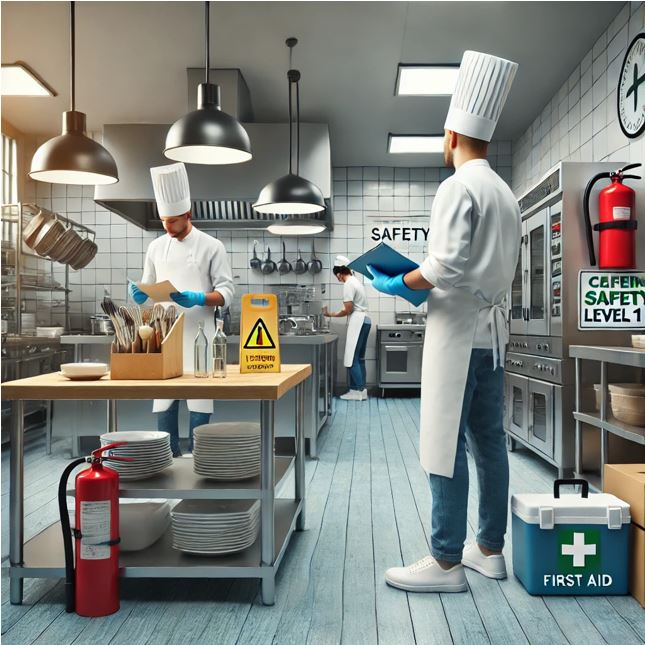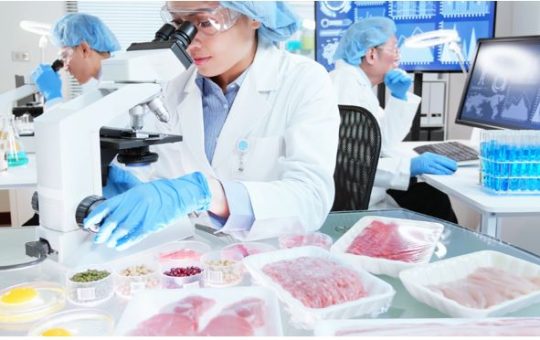
Level 1 Award in Food Safety for Catering
Course Overview
The Level 1 Award in Food Safety for Catering is an introductory course designed for those working or intending to work in the catering industry. This course covers the basic principles of food safety, focusing on personal hygiene, safe food handling, and maintaining cleanliness in a catering environment. It provides essential knowledge for those involved in food preparation, service, and other food-related tasks in catering businesses, ensuring they understand how to prevent foodborne illnesses and maintain safe food practices.
Benefits
- Basic Food Safety Knowledge: Provides a fundamental understanding of food safety principles in catering environments.
- Regulatory Compliance: Understand the basic hygiene and safety regulations required in catering operations to comply with health and safety standards.
- Prevention of Foodborne Illnesses: Learn how to prevent foodborne illnesses through safe food handling practices and hygiene.
- Improved Customer Trust: Demonstrating food safety practices builds trust with customers, ensuring they are served safe and hygienic food.
- Career Entry: Ideal for those new to the catering industry, enabling entry-level roles in food service and preparation.
Learning Outcomes
Upon completing the course, learners will be able to:
- Understand the importance of food safety in a catering environment.
- Recognize the various types of foodborne hazards and how to control them.
- Identify the basic hygiene practices that contribute to food safety.
- Implement safe food handling techniques to prevent contamination.
- Follow procedures for cleaning and sanitizing food preparation and storage areas.
- Understand the roles of personal hygiene and health in food safety.
Study Units
Unit 1: Introduction to Food Safety
- The significance of food safety in catering.
- Overview of foodborne illnesses and their causes.
- Importance of hygiene and cleanliness in the catering environment.
Unit 2: The Importance of Personal Hygiene
- Understanding the role of personal hygiene in preventing contamination.
- Correct handwashing techniques and the role of protective clothing (e.g., gloves, aprons).
- How to manage personal health and the implications of ill workers in the catering setting.
Unit 3: Food Handling and Contamination Prevention
- Safe food handling practices to avoid cross-contamination.
- The difference between high-risk and low-risk foods.
- Preventing contamination from raw and cooked foods.
- Correct food storage and temperature control.
Unit 4: Cleaning and Sanitizing
- Best practices for cleaning and sanitizing food preparation areas and utensils.
- The role of cleaning agents and disinfectants.
- Maintaining clean environments to prevent foodborne illnesses.
Unit 5: Safe Food Storage
- Understanding temperature control in food storage.
- The importance of proper storage of food to prevent contamination and spoilage.
- Best practices for storing raw and cooked foods.
Unit 6: Reporting and Managing Food Safety Hazards
- Identifying food safety hazards and their risks.
- Basic techniques for reporting hazards in a catering setting.
- Procedures for managing food safety concerns.
Career Progression
The Level 1 Award in Food Safety for Catering serves as an essential qualification for those starting their careers in the catering and food service industry. Potential career paths include:
- Catering Assistant: Work in food preparation and serving while ensuring food safety practices are followed.
- Kitchen Assistant: Assist in food preparation and support kitchen staff with maintaining cleanliness and food hygiene.
- Food Service Worker: Provide safe food service in catering environments, including restaurants, cafes, and events.
- Waitstaff: Ensure food is safely delivered and presented to customers with a focus on hygiene.
This entry-level qualification can be further complemented with higher-level food safety qualifications or specialized training to progress into more senior roles such as Food Safety Supervisor, Chef, or Catering Manager.
Our assessment process is designed to ensure every learner achieves the required level of knowledge, skills, and understanding outlined in each course unit.
Purpose of Assessment
Assessment helps measure how well a learner has met the learning outcomes. It ensures consistency, quality, and fairness across all learners.
What Learners Need to Do
Learners must provide clear evidence that shows they have met all the learning outcomes and assessment criteria for each unit. This evidence can take different forms depending on the course and type of learning.
Types of Acceptable Evidence
Assignments, reports, or projects
Worksheets or written tasks
Portfolios of practical work
Answers to oral or written questions
Test or exam papers
Understanding the Structure
Learning outcomes explain what learners should know, understand, or be able to do.
Assessment criteria set the standard learners must meet to achieve each learning outcome.
Assessment Guidelines
All assessment must be authentic, current, and relevant to the unit.
Evidence must match each assessment criterion clearly.
Plagiarism or copied work is not accepted.
All learners must complete assessments within the given timelines.
Where applicable, assessments may be reviewed or verified by internal or external quality assurers.
Full learning outcomes and assessment criteria for each qualification are available from page 8 of the course handbook.
Top Courses
No results found.
Related Courses
Let's Get in touch
Deleting Course Review
Course Access
This course is password protected. To access it please enter your password below:



